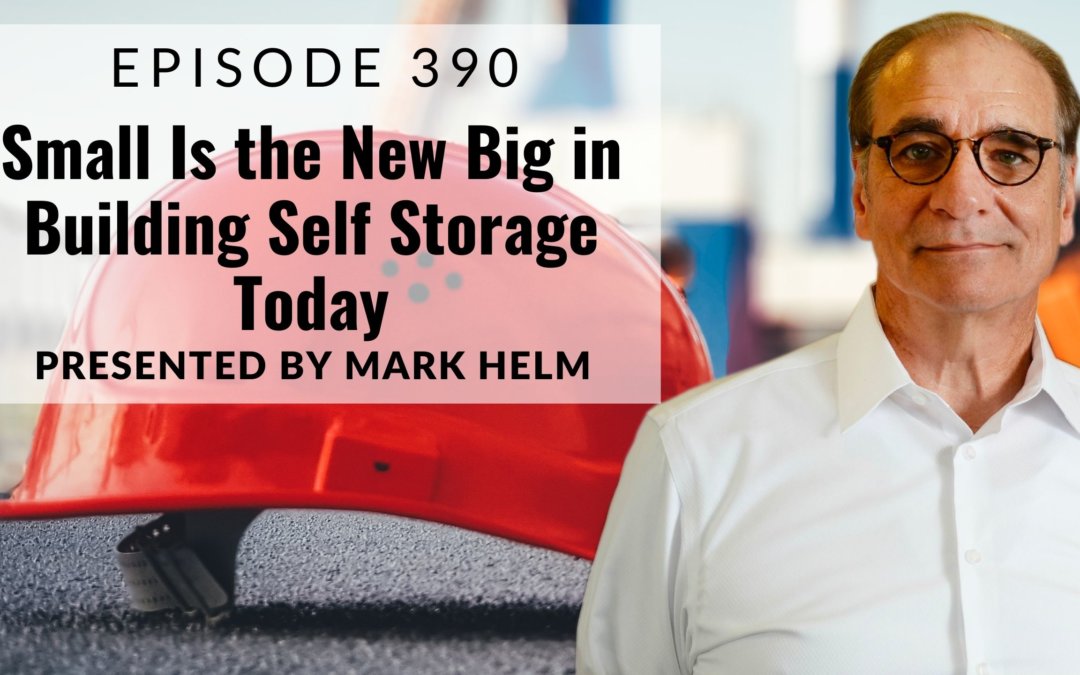As I write this episode in 3ed quarter of 2023, we live in the shadow of many big self-storage facilities.
Lots of it.
Over the past eight years or so, there have been a lot of:
- REITs have expanded their foothold in the self-storage space. Since 2015, REITs have gained at least 10% more of the total self-storage in the US, accounting for well over 30%.
- Lots of “funds,” well-capitalized investment syndications, have poured lots of money into the self-storage space.
Between these two mammoth players who have built massive amounts of large, multi-story self storage projects, we have never had so much product in the market or shadows cast by these massive buildings.
Question: What is a small investor like us to do?
Answer: Don’t stand in the shadows.
Many of those massive buildings that are going into service now or in the recent past will not perform too well. But that is another episode.
Those “get the money out the door” projects could be real opportunities for us.
But today, for the question, “What’s a small self-storage investor to do,” I want to address the go-to answer I have used in my career whenever wondering what to do and where to plant a flag.
Buy or build what these larger players are not looking for.
The Good Old Days
When I first started, I would look for expansion and conversion opportunities.
Why?
Well, for the most part, REITs were not looking at them, and when we completed them, they would look at what we had.
I still like that value-add play.
The challenge is that as markets tighten up with the amount of new storage and prices stay relatively high compared to interest rates (i.e., a 7% CAP sales price and interest rates in the high 6s to low 8s). Deals are harder to find.
Today, I still like those plays. There are just less of them. I just have to burn more calories to find them.
So, does that mean building is the way to go?
Well…perhaps.
I am very hesitant today to build a large multi-story project shadow caster or a large development project that will take three years or so to hit stabilization.
I am not saying I won’t. I am just very hesitant to.
A lot has to be going for it, like low competition, high barrier of entry, real growing population, and most of all, high rents (to combat the current cost of construction).
Some are out there, but I am slow to think about them and fast to get out of them.
A Story Of What I Do Like
I was working with a coaching student (yes, I coach, and if you want to explore it, click here to set up a call), and he had a site in an outlying area of a fairly large city. This site had good demographics, strong rents, and population growth.
What has been appearing in this general market area are the large, multi-story buildings that cast the shadows I mentioned above.
In fact, one was beginning to appear about a mile away (a large building under construction, 100% climate-controlled).
Initially, he was planning the same, trying to assemble adjoining land.
However, my client’s cost of his land was low (he has owned it for a while).
I suggested we run a proforma doing a small, drive-up, mostly non-climate-controlled project that could be automated.
Why?
Even though the monster player was ahead of him, he could hit the market with 25% of the space they had, mostly a different type of space (i.e., non-climate controlled), be leased up before them because of his size, and with the rent structure in the market, be very profitable.
It was a much less expensive project, much faster, which, in today’s world of quickly changing economic landscapes, means something.
And guess what?
The cash-on-cash returns were higher, and the IRR was higher than the big project we worked up a proforma on primarily because the construction costs were lower due to its simplicity.
Less cost, faster, higher returns, and safer.
It is a winning combination (unless you have got to get $30 million out the door like the funds in the area…I promise my only dig at funds this episode).
But the most important thing is that my client would have a different product and customer experience to offer that market than the large shadow casters.
Answer to the question posed above: Put your attention on what the big players are not.
So today, perhaps small is the new big.




Great Analysis of the Market Place and as you say, “Small is the NEW big in SS today.”